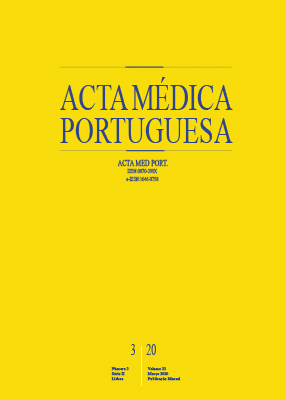Prevention of Human Papillomavirus Infection. Beyond Cervical Cancer: A Brief Review
DOI:
https://doi.org/10.20344/amp.12259Keywords:
Papillomavirus Infections, Papillomavirus Vaccines, Uterine Cervical NeoplasmsAbstract
Introduction: Human papillomavirus is responsible for almost all cases of cervical cancer, an important portion of anogenital and oropharyngeal invasive and preinvasive lesions, as well as genital warts (condyloma acuminatum) and recurrent respiratory papillomatosis. Currently, three prophylactic vaccines against high-risk Human papillomavirus are commercialized in many countries worldwide.
Methods: To this non-systematic review the authors searched in MEDLINE/PubMed for systematic reviews, meta-analysis and randomized controlled trials, published in the last six years, using the terms “HPV”, “non-cervical cancer” and “vaccine”. Non-cervical cancers caused by human papillomavirus are less common lesions. However, its incidence has been increasing, while cervical cancer has declined, due mainly to highly effective screening programs. There are no formal screening programs for non-cervical cancers, so universal vaccination could have an important impact. The preventive effect of the vaccine is mainly studied and established in relation to cervical cancer, although it has also been demonstrated in the development of vulvar and vaginal lesions. To date, the efficacy in preventing anal and oropharyngeal diseases related with human papillomavirus is uncertain due to scarce supporting data and low vaccination coverage in men. The prevalence of injuries and subsequent absolute benefit of vaccination is lower in men, but it provides an additional benefit to the herd immunity achieved with the vaccination of women.
Conclusion: The total fraction of malignant and pre-malignant lesions attributed to Human papillomavirus genotypes contained in the nonavalent vaccine is significant in both women and men, which turns this vaccine into a great asset in terms of Public Health.
Downloads
Downloads
Published
How to Cite
Issue
Section
License
All the articles published in the AMP are open access and comply with the requirements of funding agencies or academic institutions. The AMP is governed by the terms of the Creative Commons ‘Attribution – Non-Commercial Use - (CC-BY-NC)’ license, regarding the use by third parties.
It is the author’s responsibility to obtain approval for the reproduction of figures, tables, etc. from other publications.
Upon acceptance of an article for publication, the authors will be asked to complete the ICMJE “Copyright Liability and Copyright Sharing Statement “(http://www.actamedicaportuguesa.com/info/AMP-NormasPublicacao.pdf) and the “Declaration of Potential Conflicts of Interest” (http:// www.icmje.org/conflicts-of-interest). An e-mail will be sent to the corresponding author to acknowledge receipt of the manuscript.
After publication, the authors are authorised to make their articles available in repositories of their institutions of origin, as long as they always mention where they were published and according to the Creative Commons license.









